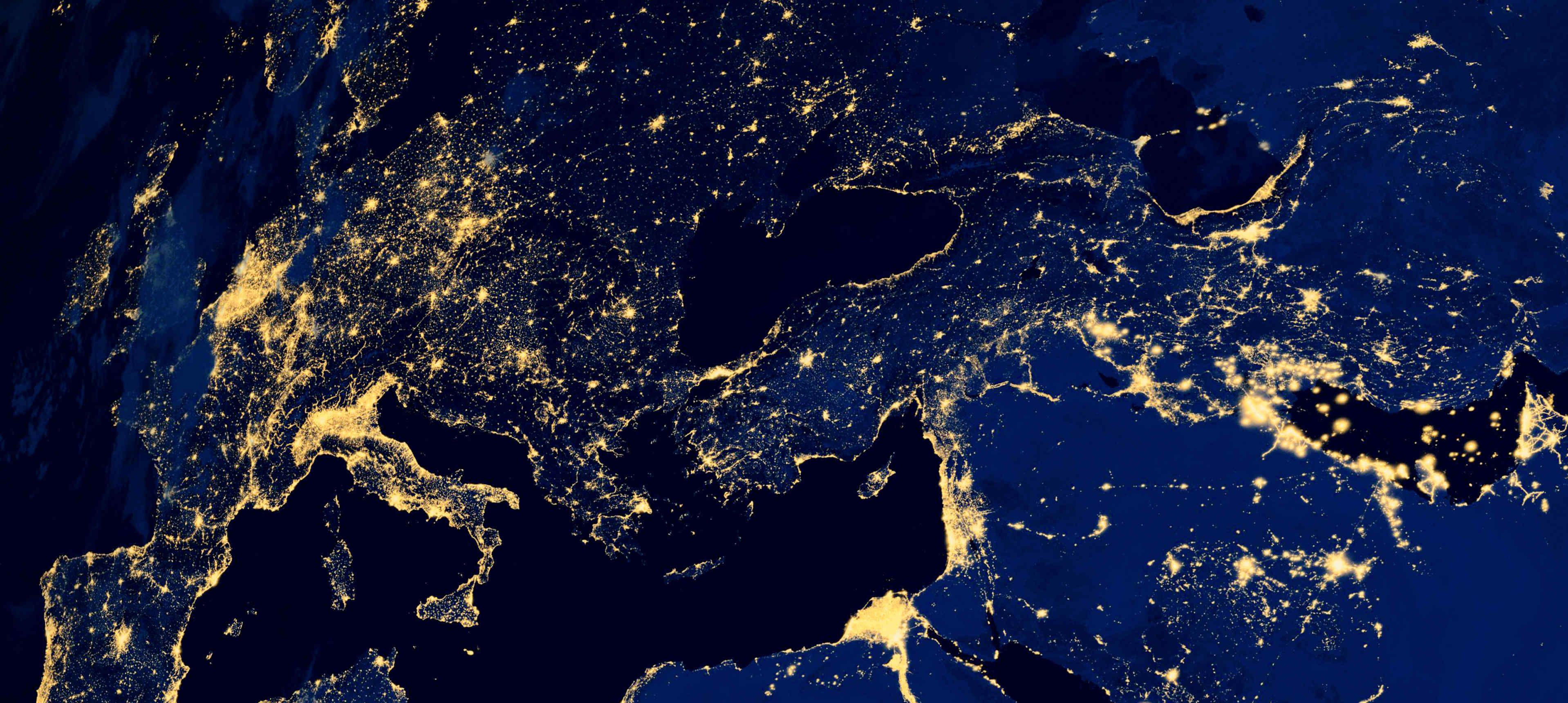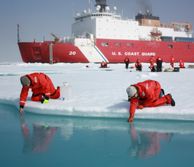Climate Science
Understanding the processes underpinning our planet’s climate is fundamental to predicting future change. This research theme focuses on expanding our knowledge of the oceans and atmosphere and the way in which these systems influence one another, forming the basis for more accurate climate models. Evaluating the confidence that can be placed in these projections is also crucial to devising effective policies.
Explore our work
It is important for us to understand how human activities affect the Earth's atmosphere. Read more about the latest challenges we are tackling at the Grantham Institute to measure and monitor our atmosphere, and understand our interactions with it.
Academics / Publications
Academic Expertise
Explore our directory of Imperial academics who are working in:
Publications
Grantham Institute briefing papers provide background and advice on key climate change and environment issues.
Read Grantham Institute publications about climate science.
A selection of projects
Extra-tropical ocean-atmosphere coupling through moist convection
The current generation of climate models highlights the tropics (30S-30N) as the region of the Earth where climate variability is shaped jointly by the ocean and the atmosphere (see El Nino events for example). This two-way interaction is mediated by atmospheric convection (warm and moist air rises while cold dry air descends).
In a recent study (Czaja and Blunt, 2011) we have been investigating whether moist convection could also play a role in ocean-atmosphere coupling away from the Tropics (Fig. 1 - click on the image to the right). As the diagnostic shows, moist convection does indeed occur frequently and reaches deep into the atmosphere, especially over intense currents like the Gulf Stream or the Kuroshio. This is a very exciting result as it might provide a new pathway to communicate oceanic variability, likely more predictable than internal atmospheric variability owing to its slower evolution, to the atmosphere. Interestingly, the mechanisms involved in moist convection in the extra-tropics differ from those in the tropics due to the larger effect of the Coriolis force. More work is needed to incorporate them into coupled climate models.
Publications
Advanced computational science for climate modelling
Lead Researcher: Dr David Ham
Modelling climate processes, from single phenomena idealised cases to fully coupled Earth system models involves some of the most challenging computing tasks in any part of science. Dr Ham's research involves applying the latest scientific computing and computer science technology to computational problems in the Earth System.
As the developer of the core numerical library underlying Fluidity, the Imperial College Ocean Model (Fluidity-ICOM), Dr Ham's research facilitates the exploration of complex ocean phenomena through highly configurable, parallel simulations. In collaboration with Dr Colin Cotter, Dr Ham has developed discretisations which are tailored to optimally represent the unique geostrophic properties of the ocean and atmosphere.
High performance computer hardware is becoming rapidly more complex. In collaboration with Professor Paul Kelly of Imperial's Department of Computing and others at Imperial and elsewhere, Dr Ham and his students are developing abstracted architectures which enable the automatic generation of parallel model code for the latest complex parallel platforms. Dr Ham is working with the Met Office to evaluate these approaches for their next generation atmospheric model.
Complex simulations are exceptionally difficult to correctly configure. Work by Dr Ham and his collaborators on interface automation has resulted in an input validating user environment for Fluidity-ICOM which reduces the risk of complex simulation results being invalided by input errors by the scientist.
Publications
- Farrell PE, Piggott MD, Gorman GJ, et al, Automated continuous verification for numerical simulation, Geoscientific Model Development, 2011, Vol:4, Pages:435-449
- Cotter CJ, Ham DA, Numerical wave propagation for the triangular P1(DG)-P2 finite element pair, J COMPUT PHYS, 2011, Vol:230, Pages:2806-2820
- Markall GR, Ham DA, Kelly PHJ, Towards generating optimised finite element solvers for GPUs from high-level specifications, Procedia Computer Science, 2010, Vol:1, Pages:1809 - 1817-1809 - 1817, ISSN:1877-0509
- Ham DA, Farrell PE, Gorman GJ, et al, Spud 1.0: generalising and automating the user interfaces of scientific computer models, Geoscientific Model Development, 2009, Vol:2, Pages:33-42
- Cotter CJ, Ham DA, Pain CC, et al, LBB stability of a mixed Galerkin finite element pair for fluid flow simulations, J COMPUT PHYS, 2009, Vol:228, Pages:336-348
- Cotter CJ, Ham DA, Pain CC, A mixed discontinuous/continuous finite element pair for shallow-water ocean modelling, Ocean Modelling, 2009, Vol:26, Pages:86-90
Ocean Dynamics and Climate
Lead Researcher: Dr Pavel Berloff
My research focuses on understanding fundamental physical processes in the ocean, particularly those that involve ocean turbulence and impact climate, and in developing mathematical models of these processes.
Particular topics include:
- role of the ocean in maintaining the global climate and origins of the interannual-to-interdecadal variability observed at midlatitudes
- dynamics of mesoscale oceanic eddies and their interactions with large-scale flows
- mathematical modelling of unresolved small-scale processes
- transport and mixing by oceanic eddies and coherent vortices
- understanding multiple alternating jets of the oceanic circulation.
Publications
- Berloff, P., I. Kamenkovich, and J. Pedlosky, 2009a: A mechanism of formation of multiple zonal jets in the oceans. J. Fluid Mech., 628, 395–425.
- Berloff, P., A. Mc C. Hogg, W. Dewar, 2007: The Turbulent Oscillator: A Mechanism of Low-Frequency Variability of the Wind-Driven Ocean Gyres. J. Phys. Oceanogr., 37, 2363–2386.
- Berloff, Pavel S., James C. McWilliams, 2002: Material Transport in Oceanic Gyres. Part II: Hierarchy of Stochastic Models. J. Phys. Oceanogr., 32, 797–830.







--tojpeg_1591184233196_x4.jpg)







